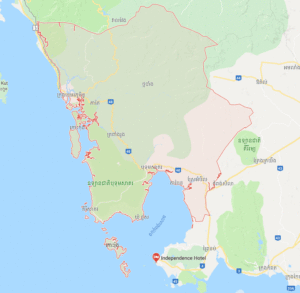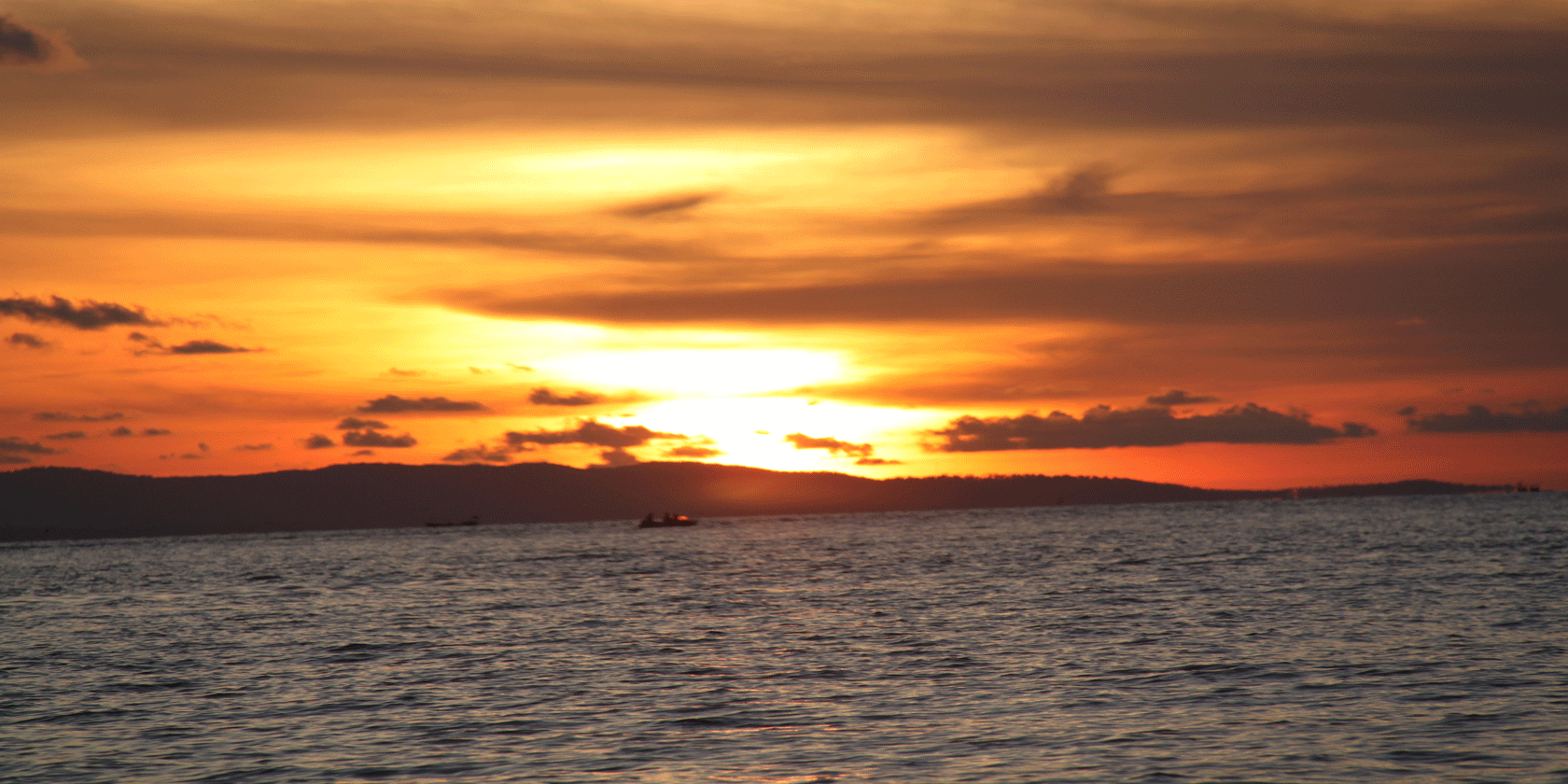
Koh Kong is a province in southwest Cambodia with a vast undeveloped coastline and a rugged interior encompassing part of the Cardamom Mountains’ rainforest. The forested, hilly Koh Kong Island is lined with tropical beaches. South of the provincial capital, also called Koh Kong, the mangroves and waterways of Peam Krasop Wildlife Sanctuary are home to animals, birds and fishing communities.
Tat Tay Waterfall
The Tat Tay is a beautiful, natural water rapids. While the roads to the rapids are rough, it usually takes about 2 hours by motorbike from town. It is located along the Sre Pork River, in Lum Phat commune, Lum Phat district, Ratanak Kiri province. A Tat Tay water rapid is a seasonal attraction, most visited from February to April. During this period, visitors like to come and enjoy the beautiful clear waters. In part of the area, there are mango plantations.
Veal Ram Plang
Veal Ram Plang means the Ram Plang field and is an attractive nature spot that is part of the territories of the legendary hill tribe communities living there. It is a mesa plateau area on top of a mountain in Ratanak Kiri province. On this field are grass and wild plants, which flower during the whole rainy season from May till January. Near the field is a small, clean river. Veal Ram Plang got its name from the son of a hill tribe chief who lived in the surrounding area. According to legend, a long time ago Veal Ram Plang was the natural mountain playground for many of the local hill tribe children who used to come here to fly their kites and play. Once day, a boy named Ram Plang, the son of the local hill tribe chief, came for his usual kite flying. When he was flying his kite, a strong wind came up and tore his kite away. It flew up and was caught on the top of the tallest Sra-lav tree (the Latin word for this tree is Vateria coincidences). Ram Plang was unhappy about the fate of his beautiful kite so he decided to climb up the tree to get it back. Unfortunately, when he reached the top branch of Sra-lav where his kite was stuck, the branch broke and he fell to his death. His friends reported the news to Ram Blang’s father and to the villagers. They all came to his traditional hill tribe merit ceremony funeral. Ram Plang’s body was kept there in a small tomb and his kite was put inside that tomb. Later on, his beautiful long kite became a river which still remains to this day. The place and date of Ram Plang’s death is celebrated in a respectful ceremony by all of the hill tripe future generations. Hill tribe people of the region came from all around to honor Ram Plang’s spirit. They brought many wine jars, food and fruit to this ceremony each year. The rice hull rubbish from the traditional hill wine was thrown away near Ram Plang’s tomb. This huge rice hull pile got bigger and bigger after many years of ceremonies until it became a small hill
Virachey National Park
Picturesque natural forest, stunning mountains, plateaus, valleys, local ethnic communities and a diverse wildlife all await visitors at Virachey National Park. Virachey National Park covers an area of 3,325 square kilometers in Veun Sai and Taveng district of Ratanak Kiri province. It’s about 60 km north of Banlung town in Ratanak Kiri province. The Virachey Park serves as the largest national park in Cambodia. In Virachey National Park, there are thousand-year-old trees, prairies, a hundred bird species including the Create Hornbill and Red-collared Woodpecker, and other diverse wildlife species. The vast forests, grasslands, mountains and valleys remain largely unexplored and undisturbed by human settlement and may still harbor new and undiscovered wildlife species. They provided important habitats for tigers, elephants, wild cattle and a number of spectacular, globally threatened primate and bird species. The northeast of Cambodia has been the home to many indigenous hill tribe people for centuries and remains a center for cultural diversity in the region. Indigenous Brau and Kavet people continue to depend on the natural resources of Virachey for their survival and several communities are now participating in the park’s ecotourism program. Virachey has a rich, albeit tragic, historical heritage through its association with the American Vietnam war, the legacy of which can still be readily observed along the infamous Ho Chi Minh Trail that traverse the park. Virachey National Park was designated as an Asean Heritage Park in 2003 in recognition of its outstanding contribution to regional and international biodiversity conservation

